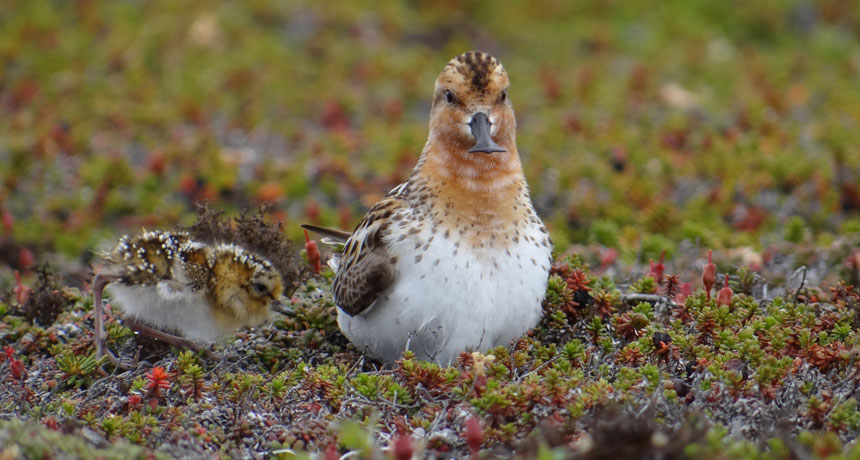Climate change may have made the Arctic deadlier for baby shorebirds

Climate change may be flipping good Arctic neighborhoods into killing fields for baby birds.
Every year, shorebirds migrate thousands of kilometers from their southern winter refuges to reach Arctic breeding grounds. But what was once a safer region for birds that nest on the ground now has higher risks from predators than nesting in the tropics, says Vojtěch Kubelka, an evolutionary ecologist and ornithologist at Charles University in Prague. With many shorebird populations dwindling, nest success matters more every year.
A longtime fan of shorebirds, Kubelka had heard about regional tests of how predator risk changes by latitude for bird nests. He, however, wanted to go global. Shorebirds make a great group for such a large-scale comparison, he says, because there’s not a lot of variation in how nests look to predators. A feral dog in the United States and a fox in Russia are both creeping up on some variation of a slight depression in the ground.
So Kubelka and his colleagues crunched data from decades of records of predator attack rates on about 38,000 nests of various sandpipers, plovers and other shorebirds. After a massive literature search, the study zeroed in on the experiences of 237 populations of a total of 111 shorebird species at 149 places on six continents. It’s the first attempt at a global comparison by latitude of predator attack rates on shorebird nests over time, he says.
Historical data of predator attack rates worldwide averaged about 43 percent before 1999, but has since reached 57 percent, the team reports in the Nov. 9 Science. The most dramatic upward swoop came from the Arctic nest reports. There, the rate of predator attacks averaged around 40 percent in the last century, jumping to about 65 or 70 percent since 1999. Meanwhile, tropical perils in the Northern Hemisphere changed “only modestly” the researchers say, from around 50 percent to about 55 percent.
Researchers also looked at how much, and how erratically, temperatures had changed at each site. Overall, the growing dangers to nests fit with climate change trends.
Biologists have discussed the idea that nest predation generally lessens when birds move out of the tropics. One advantage of migrating toward the pole to breed was, in theory, to escape from tropical abundance of snakes, rodents and other egg-lovers.
But rapid warming in the Arctic might have discombobulated some of the old predator-prey relationships, says coauthor Tamás Székely, a conservation biologist at the University of Bath in England. For instance, Arctic foxes used to get much of their nourishment from lemmings, voles and other small rodents. Skimpy snow cover in warmer winters, however, doesn’t insulate little rodents as well as it used to. Boom-and-bust cycles of lemming populations are in many places now “mostly bust,” he says. Foxes and other predators may be shifting more to bird eggs and nestlings.
That scenario of rodent-loving predators hunting more birds sounds “highly probable,” but may be just part of what’s going on, says Dominique Fauteux, an ecologist at the Canadian Museum of Nature in Ottawa who studies small mammals. Lemming collapses haven’t been reported across the whole Canadian Arctic, he says.
Instead, some researchers have proposed that shorebird nest failures come from a boom in geese that attract more bird predators overall. Also, a 2010 study suggests that nest predation in the Canadian Arctic was still lower than in temperate areas. There may be some global pattern, but on the ground, Fauteux says, “there clearly are nuances.”